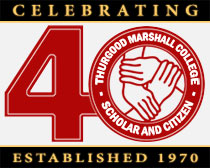| THURGOOD MARSHALL COLLEGE Developing the Scholar and Citizen |

The TMC History Project
A Short History of Thurgood Marshall College
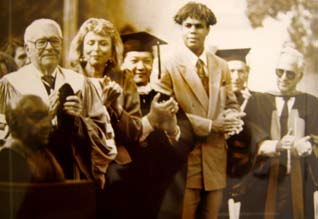
Dedication of Thurgood Marshall College, UC San Diego in 1993 William McGill, Wadie Deddeh, Alex Wong, James Hill, Carlos Blanco, Jack Peltason |
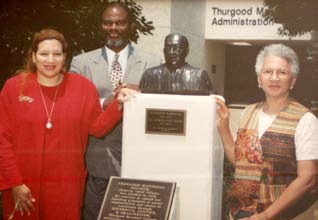 Dedication of Thurgood Marshall Bust, UC San Diego in 1993 Valette Finley , Provost Cecil Lytle, Sculptor Manuelita Brown |
The Thought of a “College III”
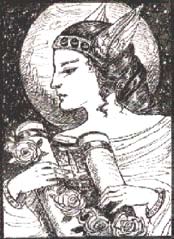
UCSD began enrolling undergraduates in the fall of 1964. The University was to be modeled after the College System of Oxford and Cambridge in Great Britain. At that time there were two undergraduate colleges, Revelle and Muir.
In 1965 the University began planning for a third college. In November of 1965 the College III Preliminary Planning Committee released its suggestion about what the nature of the new college should be. They suggested that College III be focused on the study of history and its theory, because, while it was strong in humanities, history also explores the sciences, arts, and social science. College III would be the focused on liberal arts, an area missing on the campus.
The curriculum would be interdisciplinary and cover a broad range of subjects. Clio, the Greek muse of history, was the suggested name. In 1966, Chancellor John Galbraith created a second College III planning committee. By 1967 UC Berkeley History Professor Armin Rappaport was appointed provost and the Planning committee was changed to be composed of College III provisional faculty. At this time, the committee decided simply to refer to the college as Third College.
Faculty Support in the Coalition

Literature professor Carlos Blanco was the faculty advisor for the Mexican American Youth Association (MAYA). MAYA was mostly a social organization, but was starting to shift to be a more progressive, politically active organization. They soon changed their name to the more militant Movimiento Estudiantil Chicano de Aztlan (MEChA).

When the focus of the college shifted to honor the ideals of Reverend Dr. Martin Luther King Jr. after his assassination, Provisional Provost Armin Rappaport approached MAYA and the BSC to get their insights on what the ethnic element of the college should look like. BSC approached MAYA and suggested that they form a coalition and fight for more than just an ethnic element within the traditional college structure. The Lumumba-Zapata Coalition was formed.
Chemist Joseph Watson was the faculty advisor for the Black Student Council (BSC). The BSC already had a presence on campus and was active in initiating the idea of an African-American Studies Program, with Watson’s help, the same year that they were approached by Rappaport about Third College. In July of 1970, Watson became the college’s first official Provost. He served in that post until 1981.
Students Rally Around the Idea of a New Type of College
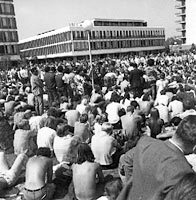
The coalition, with the help of supportive faculty members like William Frazer, Carlos Blanco, Joseph Watson, and Herbert Marcuse, held rallies to show how much support the idea of Third College really had.
Students flooded Revelle Plaza, then the center of campus, to hear enthusiastic student leaders of the movement speak. Angela Davis, a well-known activist, was a grad student at the time, and was an instrumental leader and igniter of support.

The Students Take Action... and Are Victorious
Twenty-eight Students from the Lumumba-Zapata Coalition were allowed into the hall where the Academic Senate was meeting, in order to represent their plan. Many of the faculty had been involved in crafting the plan and many more were open to the ideas the coalition was presenting. However, the politics of the Academic Senate, concerns over the radical nature of the plan, and resistance from certain departments and individual faculty members slowed the process. Distrust began to grow among the students, as did doubts that the plan would ever be approved.
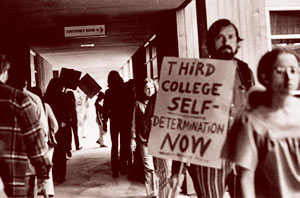
Although the plan was approved in theory on May 6, 1969, the Senate still needed to decide on a concrete plan for the college to actually come into existence. As tension grew, and the process once again came to a halt, students walked out of the Senate in protest, and broke into and occupied the Registrar’s Office. During the ninety minutes that students were occupying the Registrar’s Office, Sylvio Varon, a sympathetic faculty member offered a resolution that laid out a plan for bringing Third College into existence the way the students envisioned it. The resolution passed 94-5-7 and the students had their college.
Lumumba-Zapata Coalition Demands
- Academic Focus:
Theory and practice of revolutions; economic systems; science and technology; health sciences and public health; urban and rural development; communications arts; foreign languages; cultural heritage; white studies. - Admissions:
35% Black, 35% Brown; control of admissions held by a committee of minority students; UC requirements not binding. - Governance:
Board of Directors, made up of three students, two faculty, and the provost. The provost acts as the administrative head of the college, but is not the chair of the Board. The Board had final authority over the choice of the provost, and also has the authority to recall the provost. The Board would also recommend to departments faculty to hire, and would have the power to offer available openings in college faculty to departments. - Architecture:
Mexican or African style; planning and construction from the minority community; bonds held by minority financial institutions - Community Participation:
Recruitment of students in the community by students and other members of the college.
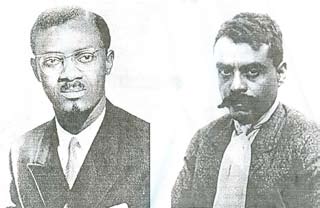
Patrice Lumumba and Emiliano Zapata
UCSD Lumumba-Zapata Movement 1969-1972 photo gallery »
Plans Change for Third
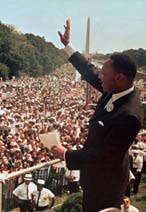
On April 4, 1968 plans for the focus of Third College shifted abruptly. Reverend Doctor Martin Luther King Jr. was assassinated. The provisional faculty of Third College hurriedly wrote a proposal to create a college in King’s honor. The proposal included the creation of different committees to map out this college. One would recruit disadvantaged students, one would be a community action committee that would bring seminars to the city, tutors to children who needed them, and other community outreach; and one would be a human relations committee that would promote the full integration of majority and minority students.
In the proposal, author Dan Lindsley passionately asserted, “The assassination of Martin Luther King in Memphis on April 4 is one of the bitter rewards we reap from our apathetic acceptance of social injustice and racism in our society.” He suggested that Third College be named Martin Luther King College. Provost Rappaport accepted the faculty’s proposal, except the name, which he argued would be better put off “until such time as our program does his name justice and honor.” Plans for Third College were now focused on honoring Martin Luther King.
Third College Academic Plan: What Third Really Looked Like in the Fall of 1970
New Departments: Third World Studies, Urban and Rural Development (Urban Studies and Planning), Health Science, Communication Arts (Communication), Asian and Pacific Islander Studies
- Planned Departments:
Literature Sciences, Pre-law, Environmental Design and Engineering - Requirements:
Third World Studies, 12 units; Urban and Rural Studies, 12 units; Communication Arts, 12 units; Science and Technology, 16 units - Admissions:
seven year experiment in the following admissions formula: General Admissions Average of 3.0 or higher (based on GPA or SAT Score); BMPA (Background, Motivation, and Persistence Average), gathered through interviews; letters of reference - Governance:
Board of Directors, made up of three students, three faculty who were advisory to the provost Architecture: design not officially indicated; minority contractors and construction preferred; residence halls were planned to include undergraduate and graduate students, married students, and faculty - Community Participation:
recruitment of minority students by students and faculty; Teacher Education Program; counseling and tutoring
Controversy Over a Name
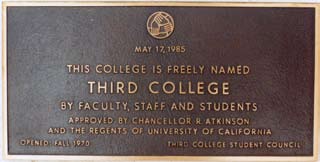
Plaque that still that still hangs in front of the TMC Administration Building, as a tribute to our past
Although many of the aspects of the Lumumba-Zapata Plan were accepted and implemented, the proposed name – Lumumba-Zapata College – was never approved. The college continued being called Third College until 1993. During those twenty-three nameless years, students became attached to Third. It came to represent their struggle, their values, their community. In 1993, when it was proposed to name the college after Justice Thurgood Marshall, who had recently passed away, students actually protested naming the college anything at all after shaping their identity around Third. While it is surprising that students would protest naming the college after someone as worthy of being our namesake as Justice Marshall, students were concerned that their history would somehow be lost along with the name Third. We are working hard to make sure that doesn’t happen, and have since built a vision for the future of Thurgood Marshall College.
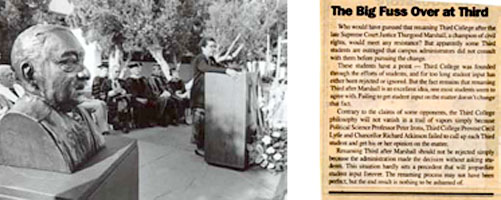
Keynote Speaker Marian Wright Edelman at the Naming Ceremony for Thurgood Marshall College
The Groundbreaking, 1974: Third College becomes a physical presence on the campus
Ground was broken on the buildings of the college in 1974. After four years of existence, the college, the struggle, and what they stood for, finally had a place to call home. One of the elements of the Lumumba-Zapata plan was that the architecture of the college be influenced by African and Mexican Architecture, which is still reflected today in the Upper and Lower Apartments.
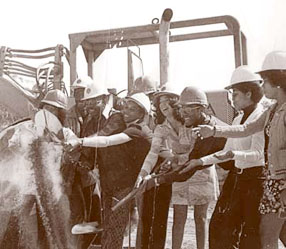
Groundbreaking, 1974
Thurgood Marshall (1908-1993)
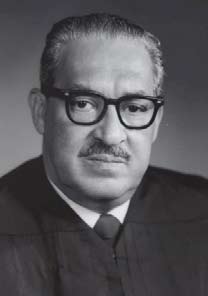
Thurgood Marshall was born on July 2, 1908 in Baltimore, Maryland. His father instilled in him an appreciation for the Constitution of the United States and the rule of law. His father’s father had been a slave. After graduating from high school in 1925, Marshall attended Lincoln University, a historically black university in Chester Pennsylvania. In 1930, after completing his undergraduate education, he applied to the University of Maryland Law School,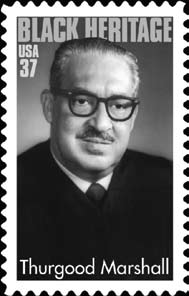 but was denied because he was black. This was a very poignant event in the life of Thurgood Marshall, as is evidenced by his life’s work. His first major court case – and victory – was suing the University of Maryland for not admitting a student because he was black.
but was denied because he was black. This was a very poignant event in the life of Thurgood Marshall, as is evidenced by his life’s work. His first major court case – and victory – was suing the University of Maryland for not admitting a student because he was black.
In 1940, Marshall became the Chief Counsel for the National Association for the Advancement of Colored People (NAACP). His very successful career in law is marked by the landmark case of Brown v. Board of Education of Topeka, Kansas, which was decided by the Supreme Court, and which overturned Plessy v. Ferguson and the doctrine of “separate but equal.” Marshall’s success in overturning Plessy v. Ferguson, as opposed to the many others who tried, was because he rejected the premise of the doctrine of “separate but equal” entirely and argued that separate is inherently unequal.
In 1967, President Lyndon Johnson appointed Marshall to the Supreme Court, the first black person to hold the position. During his tenure on the Supreme Court he was hailed for his defense of civil rights and for giving a voice to the voiceless.
Acknowledgements
TMC gratefully acknowledges the following office and individuals for the help and hard work they contributed to the creation of the Thurgood Marshall College History Project.
- Provost Emeritus Cecil Lytle
- Interim Provost Robert Kluender
- Provost Allan Havis
- Former Dean Ashanti Hands
- Dimension of Culture Program
- But most of all former DOC Director, Dr. Abe Shragge for his vision in creating the TMC History Project and Kate Pillion (‘06,) who did the research, writing and composing of the original posters of the permanent exhibit on display in the TMC Administration building.
The TMC History Project is a living document: the College encourages anyone with information, photographs, documents or artifacts relevant to the growth of our knowledge on the subject to email the TMC webmaster.
